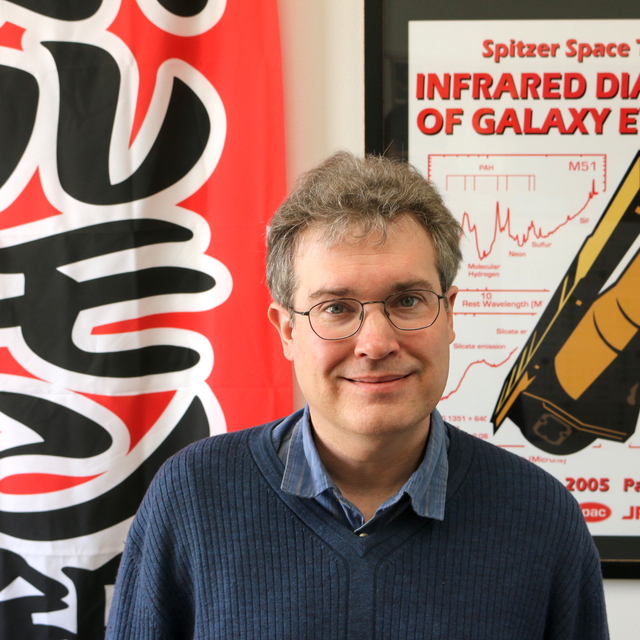April
2018
•
2018ApJ...857...64B
Authors
•
Baronchelli, I.
•
Rodighiero, G.
•
Teplitz, H. I.
•
Scarlata, C. M.
•
Franceschini, A.
•
Berta, S.
•
Barrufet, L.
•
Vaccari, M.
•
Bonato, M.
•
Ciesla, L.
•
Zanella, A.
•
Carraro, R.
•
Mancini, C.
•
Puglisi, A.
•
Malkan, M.
•
Mei, S.
•
Marchetti, L.
•
Colbert, J.
•
Sedgwick, C.
•
Serjeant, S.
•
Pearson, C.
•
Radovich, M.
•
Grado, A.
•
Limatola, L.
•
Covone, G.
Abstract
•
For a sample of star-forming galaxies in the redshift interval 0.15 < z < 0.3, we study how both the relative strength of the active galactic nucleus (AGN) infrared emission, compared to that due to the star formation (SF), and the numerical fraction of AGNs change as a function of the total stellar mass of the hosting galaxy group ({M}group}* ) between 1010.25 and 1011.9 M ⊙. Using a multicomponent spectral energy distribution SED fitting analysis, we separate the contribution of stars, AGN torus, and star formation to the total emission at different wavelengths. This technique is applied to a new multiwavelength data set in the SIMES field (23 not-redundant photometric bands), spanning the wavelength range from the UV (GALEX) to the far-IR (Herschel) and including crucial AKARI and WISE mid-IR observations (4.5 μm < λ < 24 μm), where the black hole thermal emission is stronger. This new photometric catalog, which includes our best photo-z estimates, is released through the NASA/IPAC Infrared Science Archive (IRSA). Groups are identified through a friends-of-friends algorithm (∼62% purity, ∼51% completeness). We identified a total of 45 galaxies requiring an AGN emission component, 35 of which are in groups and 10 in the field. We find the black hole accretion rate (BHAR) ∝ ({M}group}* {)}1.21+/- 0.27 and (BHAR/SFR) ∝ ({M}group}* {)}1.04+/- 0.24, while, in the same range of {M}group}* , we do not observe any sensible change in the numerical fraction of AGNs. Our results indicate that the nuclear activity (i.e., the BHAR and the BHAR/SFR ratio) is enhanced when galaxies are located in more massive and richer groups.
Links




